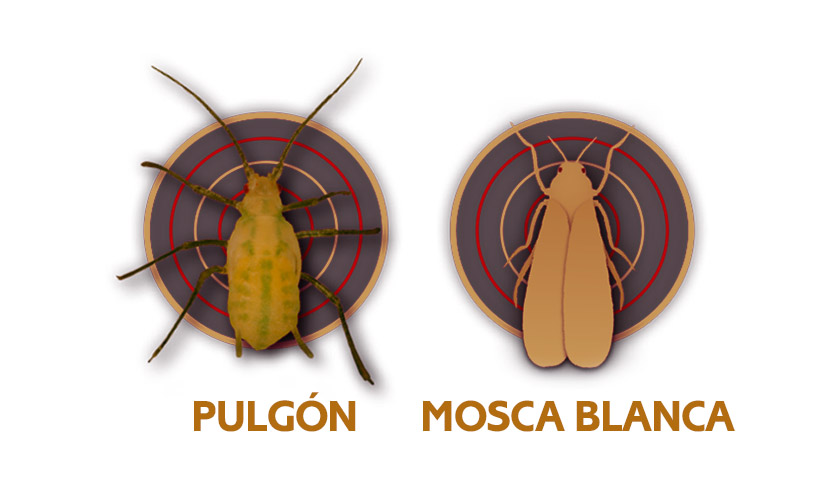How to eliminate crop aphids and whiteflies

Eliminating crop aphids and whiteflies is a necessity for farmers with the onset of good weather. Warmer temperatures starting in spring and lasting throughout summer provide the ideal conditions for the appearance of these pests. Aphids and whiteflies are insects that develop in environments with a high humidity and high temperatures, making them especially dangerous for greenhouse crops.
When deciding how to get rid of aphids and whiteflies, first and foremost it is important for farmers to be aware of some basic facts about them and the damage they cause. Despite being two different pests, both aphids and whiteflies are sucking insects which feed on the sap of the plant and have serious effects on plant organs, leaves and fruit.
Aphids and whiteflies secrete sticky honeydew which impregnates the plant and prevents its normal development. This excess of honeydew supports the growth of mould, which reduces normal photosynthesis activity. In practice, both aphids and whiteflies act by weakening plants. They can cause a whole range of problems, from chlorosis and leaf drying, to growth deformation, which end up affecting crop yields and reducing the quality of crops. Furthermore, both insects can transmit toxic substances to the plant and become vectors of phytopathogenic viruses.
Aphids and whiteflies gather on the undersides of leaves. The thin, fine cell walls make it easier for them to attack the plant. Although these insects have different cycles, they are both very fast-reproducing pests. Whiteflies, for example, develop from larvae to adults in barely 30 days so that it is possible for various generations to be produced during one crop campaign.
To get rid of crop aphids and whiteflies it is important to combat them when they appear and to control populations to reduce them. As well as preventive and cultural practices (weeding, use of appropriate irrigation, proliferation of natural predators), there are widely effective phytosanitary strategies for their control based on sustainable, environmentally rational criteria, with short post harvest interval and zero crop residues.
Powerful shock effect against aphids and whiteflies
Pirecris is a Seipasa bioinsecticide with phytosanitary registration, designed to eliminate crop aphids and whiteflies. It acts by contact. It is developed based on an exclusive formulation thanks to the perfect balance between PI and PII molecules that form the active substance, and which afford maximum insecticidal efficacy both for field crops and for greenhouse crops.
The micro-molecules in its formulation condense and generate a stable, balanced network throughout the solution, providing an insecticidal effect that acts by blocking the respiratory system on eggs and larvae, and providing perfect coverage of leaves and insects.
The advanced formulation of Pirecris for pest control enables piperonyl butoxide (PBO) to be replaced as the synergist component by carboxylates and natural antioxidants. Pirecris reduces the risk of resistances developing and is the ideal tool for using in integrated pest management programmes and organic production systems.
As already commented, both aphids and whiteflies are farmers' major enemies, especially on greenhouse crops. For the control of whiteflies on greenhouse tomatoes Seipasa produces Nakar, a bioinsecticide with phytosanitary registration that has a dual action (physical and biochemical) to combat this pest. Nakar acts by contact and is highly effective at the nonflying, immature stages of insect development.
Nakar does not have post harvest interval and it is a very useful aid in integrated pest management and organic production systems. In addition, it is a product that is compatible with beneficial organisms for pest control. Both Nakar and Pirecris prevent the development of resistances and are complementary products that can be used in the same strategy.
In both cases these pests are very common, affecting a wide range of agricultural crops. Eliminating crop aphids and whiteflies requires fast action and choosing the right strategy to reduce pest populations and avoid harvest losses.


